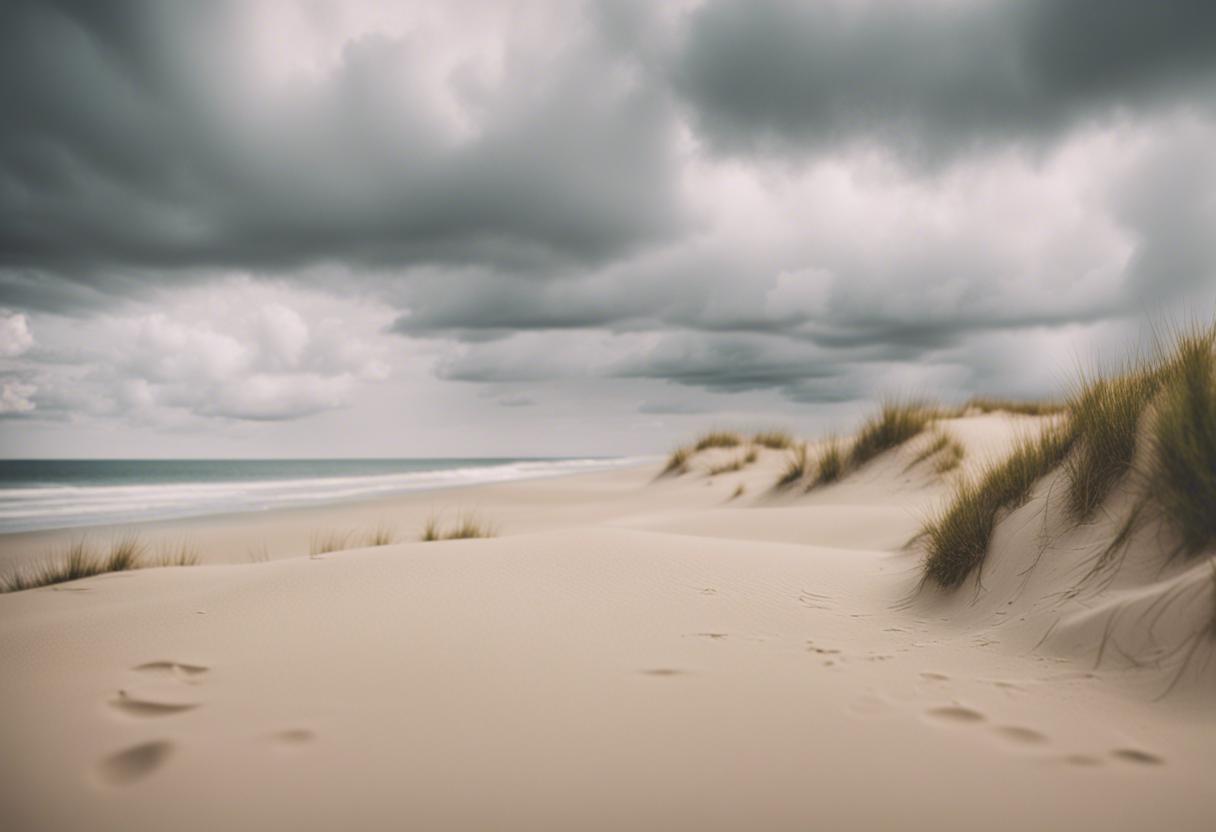Steven Spielberg’s famous reimagining of the blood-curdling beach landing on D-Day in the 1997 blockbuster, “Saving Private Ryan”, took place on the picturesque shores of Curracloe beach in Co. Wexford, Ireland, a sequence that etched its place in cinematic history. Despite being initially considered, the historical Normandy coast was passed over as a location due to overdevelopment. As a substitute, the filming took place on Curracloe’s untouched shoreline, which extends for 11km and is shallow enough to accommodate second World War-era landing crafts.
Known for its immaculate landscapes, the acclaimed Hollywood adaptation of Colm Tóibín’s Brooklyn was also filmed on the beach in 2015. However, the Curracloe of today is quite unlike its former glory due to erosion. In actuality, Curracloe consists of two beaches, Ballinesker and Curracloe, located between Raven Point’s forest, planted during the 1930s and 1940s with pine and evergreen trees to resist erosion, and a headland.
The coastline of Wexford is gradually retreating, eroding approximately 50cm per annum on average. This longstanding natural process of coastal erosion has recently sped up due to the increased frequency and intensity of storms, a side effect of climate change. For instance, a particularly destructive storm eight years ago chomped over a metre off Ballinesker beach’s soft cliff edge, exposing the forest to further erosion. Long-time Curracloe resident, Edel Moran, has observed dramatic changes over past winters, with the dunes retreating drastically and trees at the edge of the forest collapsing into the sea.
Every year, the noticeably increasing erosion of the coast is evident. The sand dunes are gradually retreating from their original positions, stripping the forest of the protective barrier against the sea that it once possessed. Violent storms have exacerbated the situation, stripping back the forest even further and revealing the defensive posts that were originally installed.
Wexford County Council’s coastal engineer, George Colfer, has identified coastal preservation, particularly of Wexford’s coast, as a significant priority. A significant proportion (approximately 100km) of Wexford’s 260km of coastline is under threat from erosion. He explains that much of Wexford’s coast is “soft”, comprising primarily of dunes and pliable clay cliffs, making it more susceptible to erosion than the rugged western coasts of Ireland, despite both being subject to regular Atlantic storms.
The council aims to restore a stretch of dune on Curracloe beach, not only as a conservation effort, but also to raise public consciousness about the issue of coastal erosion. The project, due to commence this month, intends to collaborate with the local populace on replanting Marram grass, a spiky species that contributes to the stability of dunes.
George Colfer indicates that the intensifying pace of erosion has led to the characterisation of the phenomenon as a largely natural process. He highlights that storms, especially when coinciding with high tides and easterly winds, cause the most significant damage.
Courtown, a once renowned beach of Wexford, now barely exists. Long-serving Curracloe lifeguard, Harry McGuckin, confirms how much the situation has altered over time. He acknowledges that while Courtown beach used to have lifesaving services, they no longer exist due to the beach’s disappearance.
The erosion situation is most dire at Bastardstown beach, near Kilmore, or as it is more politely referred to, Seaview. A decade ago, immense boulders (referred to as “rock armour”) were positioned along a stretch of the coast to safeguard a residential area access route. Earlier this year, emergency works were implemented to save the road routes into the housing estate.
A residential complex of 14 homes in question is situated not more than 80 metres from the coastline. In the past, the homes had the bonus of being 75 metres further inland, protected by a risen bank. However, the recent Storm Kathleen took a good chunk off the sea cliffs earlier this year. The residents are concerned as it’s their fifth relocation within recent years, due to consistent erosion of their abodes.
Upon inspection, officials were shocked to discover that the sea line had advanced a whopping nine metres annually. Andrew Grant, a resident, shared his experience about the fierce Storm Kathleen. The sea spray transformed into foam almost appeared as heavy snowfall. He had purchased a home in this development six years ago, back when the sea line was significantly more distant. Despite locals assuring him that there was no imminent threat, he has been worried about the progressively encroaching sea.
Naturally, during the difficult winter months of the last six years, the worry amplified, especially due to the fear factor among kids for the encroaching sea. Jane Corboy, another resident, confessed to her ignorance upon moving into her dream house three years ago. In her words, “the rapid coastal erosion experienced in the last three years has been unbelievable”.
The local Wexford County Council has quite rightly updated their rules for future housing projects, keeping climate change in mind. The minimum distance between the coastline and new houses has been raised from 50m to 250m. The current Seaview project wouldn’t be granted permission under these norms.
Although there is hope that the Office of Public Works will fund a rock armour to protect Seaview, Colfer foresees tough decisions to be made. Smaller housing developments and standalone units along the coast might not be as fortunate in future given the economic burden of their protection.

